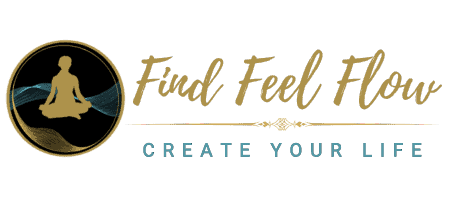Breathwork Basics: A Beginner’s Guide to Healing Through Breath
In the fast-paced world we live in today, we often overlook one of the most powerful tools available to us for healing and transformation: our breath. Many of us are parallelly navigating stress, anxiety, and a relentless to-do list, leaving little room for self-care and mindfulness. But have you ever stopped to consider how your breath can be a conduit for change? In this beginner’s guide, we will explore the basics of breathwork, its various techniques, and how you can incorporate it into your daily life to naturally enhance your well-being. Create Your Life through the power of your breath!
What is Breathwork?
Breathwork refers to a range of techniques that harness the power of our breathing patterns to facilitate physical, mental, and emotional well-being. From ancient traditions to modern wellness practices, breathwork has a rich history of helping individuals find relaxation, clarity, and healing from within. Whether you seek stress relief techniques, mindfulness for beginners, or a way to find your flow state, breathwork might just be the answer.
Why is Breath Important?
Our breath is intimately connected to our emotional state. When we experience stress or anxiety, our breathing may become shallow or rapid, reinforcing that state. Conversely, deep, rhythmic breathing can activate the body’s relaxation response, providing a sense of calm and peace. By incorporating breathwork into your routine, you can:
- Reduce stress and anxiety
- Improve focus and concentration
- Enhance emotional release and healing
- Increase energy and vitality
- Stimulate physical healing
Different Types of Breathwork Techniques
Below are several popular breathwork techniques that you can easily integrate into your daily habits for happiness:
1. Diaphragmatic Breathing
Diaphragmatic breathing, also known as abdominal or belly breathing, helps activate the body’s relaxation response. This technique encourages deeper breaths, allowing more oxygen to enter your lungs and enhancing your overall sense of well-being.
How to Practice Diaphragmatic Breathing:
- Find a comfortable sitting or lying position.
- Place one hand on your chest and the other on your abdomen.
- Inhale deeply through your nose, allowing your abdomen to rise while keeping your chest still.
- Exhale slowly through your mouth, feeling your abdomen fall.
- Repeat for 5-10 minutes, focusing on the rise and fall of your breath.
2. Box Breathing
Box breathing is a powerful technique often used to regulate stress and improve mental clarity. It involves inhaling, holding, exhaling, and holding the breath again, each for a count of four.
How to Practice Box Breathing:
- Inhale through your nose for a count of 4.
- Hold your breath for a count of 4.
- Exhale through your mouth for a count of 4.
- Hold your breath again for a count of 4.
- Repeat for several cycles.
3. Alternate Nostril Breathing (Nadi Shodhana)
This ancient yogic practice harmonizes the body and mind, bringing about a balanced state of being. It is excellent for calming nervous energy and enhancing mental clarity.
How to Practice Alternate Nostril Breathing:
- Sit comfortably and hold your right thumb over your right nostril.
- Inhale deeply through your left nostril.
- Close your left nostril with your right ring finger, releasing your right thumb and exhaling through your right nostril.
- Inhale through your right nostril, then close it with your right thumb.
- Exhale through your left nostril.
- Continue alternating for 5-10 minutes.
Incorporating Breathwork into Daily Life
Now that you’ve learned some basic techniques, how do you incorporate breathwork into your daily routine? Here are some effective strategies:
- Set Realistic Goals: Start with just 5-10 minutes of dedicated practice each day and gradually increase the time as you become more comfortable.
- Create a Ritual: Choose a specific time each day to practice your breathwork, such as in the morning or before bed. Consider combining it with meditation or light stretching.
- Utilize Reminders: Set alarms on your phone or use mindfulness apps to remind you to pause and breathe throughout the day.
- Stay Mindful: Integrate breath awareness into daily activities, such as walking, eating, or during stressful situations. A simple 3-deep breaths can create a shift in your mental clarity.
The Science Behind Breathwork
Modern research has begun to support the long-held beliefs about the benefits of breathwork. Studies have shown that intentional breathing can lead to:
- A decrease in cortisol levels (the stress hormone), leading to reduced stress and anxiety.
- Improved heart rate variability, which indicates better heart health and resiliency to stress.
- Enhanced focus and cognitive performance, making it easier to find your flow state.
As you explore your breathwork journey, remember that it is a practice, and results may not be immediate. Just as with any holistic wellness practice, consistency is key.
Conclusion
Breathwork is a profound tool that can transform your mental, emotional, and physical health. By learning how to breath mindfully, you can live a better life, reduce stress, and cultivate happiness and peace. Create Your Life by integrating these techniques into your daily routine, and experience the changes in your well-being firsthand. For additional resources, consider downloading our free guides and engaging with us on social media!
Embrace the journey of healing through breath. Share your experience with us on Instagram and connect with like-minded individuals seeking a path to holistic wellness.







